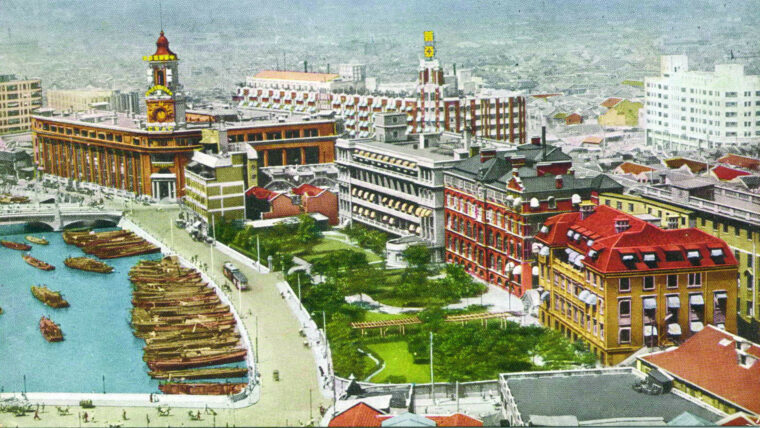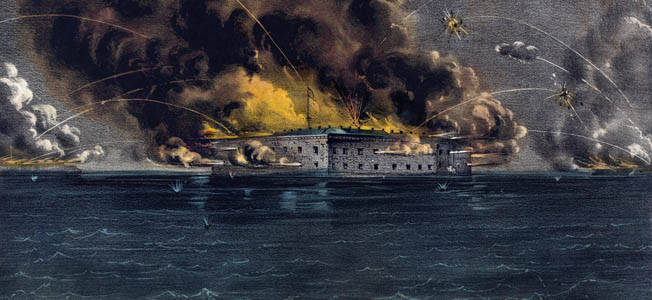
Winfield Scott
Battle of Belmont: Ulysses S. Grant’s First Battle
By Donald J. Roberts IIWhen the Civil War started in 1861, there were only two officers in the Union Army who had commanded a force in battle larger than a brigade. Read more

Winfield Scott
When the Civil War started in 1861, there were only two officers in the Union Army who had commanded a force in battle larger than a brigade. Read more

Winfield Scott
On March 4, 1861, with war clouds threatening the land, Abraham Lincoln was inaugurated the 16th president of the United States. Read more

Winfield Scott
In the cover of darkness and fog, American troops quietly made their way down to the edge of the Niagara River. Read more

Winfield Scott
“It is with artillery that one makes war.” So declared Napoleon Bonaparte, one of the Great Captains of military history and a born gunner himself. Read more

Winfield Scott
In mid-December 1941, during the thick of the Battle of Wake Island, the 400 U.S. Marines who called the island outpost home stood a lonely sentinel in the watery Central Pacific wilderness, like a cavalry fort in an oceanic version of the Western frontier. Read more

Winfield Scott
“But for you, there would have been no Battle of Bull Run.” When Confederate President Jefferson Davis made that blanket statement in the summer of 1862, he was not addressing Pierre G.T. Read more

Winfield Scott
On November 8, 1861, two distinguished diplomats from the newly established Confederate States of America were arrested and removed from the British mail steamer Trent by the American ship San Jacinto in the Bahama Channel near Havana, Cuba. Read more

Winfield Scott
American Maj. Gen. Winfield Scott captured the port city of Vera Cruz on March 27, 1847, and immediately prepared to leave it behind. Read more

Winfield Scott
After an almost uninterrupted, four-month-long string of Union successes beginning in early 1862, followed by the advance of a 100,000-man enemy army to the eastern outskirts of its capital at Richmond, Virginia, the Confederacy suddenly found itself in a life-or-death struggle for its very survival. Read more

Winfield Scott
Colonel Patrick Kelly, who led the Irish Brigade into the Wheatfield on the second day of the Battle of Gettysburg, was born in Castle Hackett, County Galway, in 1821. Read more

Winfield Scott
U.S. President Abraham Lincoln had no military experience and discarded most of Lt. Gen. Winfield Scott’s so-called Anaconda Plan, which critics deemed too conservative. Read more

Winfield Scott
The Confederate attack on Fort Sumter on April 12, 1861, marked the beginning of the American Civil War. Read more

Winfield Scott
In theory, sealing off Southern seaports was supposed to cause economic ruin in the South, which in turn would diminish the Confederacy’s ability to wage war. Read more

Winfield Scott
By the 1930s, Shanghai was already a legend in its own time––the most modern, populous, and decadent city in China. Read more

Winfield Scott
Despite roughly 50,000 casualties reported on both sides during the Battle of Gettysburg, there was only one reported civilian casualty: Mary Wade, a seamstress, was hit by a stray bullet while making bread in her kitchen. Read more

Winfield Scott
Of all the unlikely heroes of the Civil War, none was more unlikely than Bushrod Johnson, Ohio-born Quaker turned Confederate general. Read more

Winfield Scott
One of the catalysts for a major rebellion in the United States were irregular warfare in “Bleeding Kansas” from 1854 to 1861 between anti-slavery Free Staters and pro-slavery border ruffians. Read more

Winfield Scott
U.S. General Winfield Scott’s army climbed through the mountains of central Mexico, an arduous trek that included blistering hot days and bitterly cold, rain-drenched nights. Read more

Winfield Scott
Brigadier General James S. Rains’s Confederate cavalry rode confidently toward the prosperous little town of Lexington, Missouri. Dressed in Missouri homespun, Rains’s men hardly looked the part of a flying military column, but most of the hard-riding horsemen had known only victory during their short service. Read more

Winfield Scott
The use of individuals unaffiliated with any intelligence organization is commonplace in the annals of espionage. Governments often use people who have certain skills or expertise to establish contact with other individuals who are believed to have influence with the nation they represent. Read more